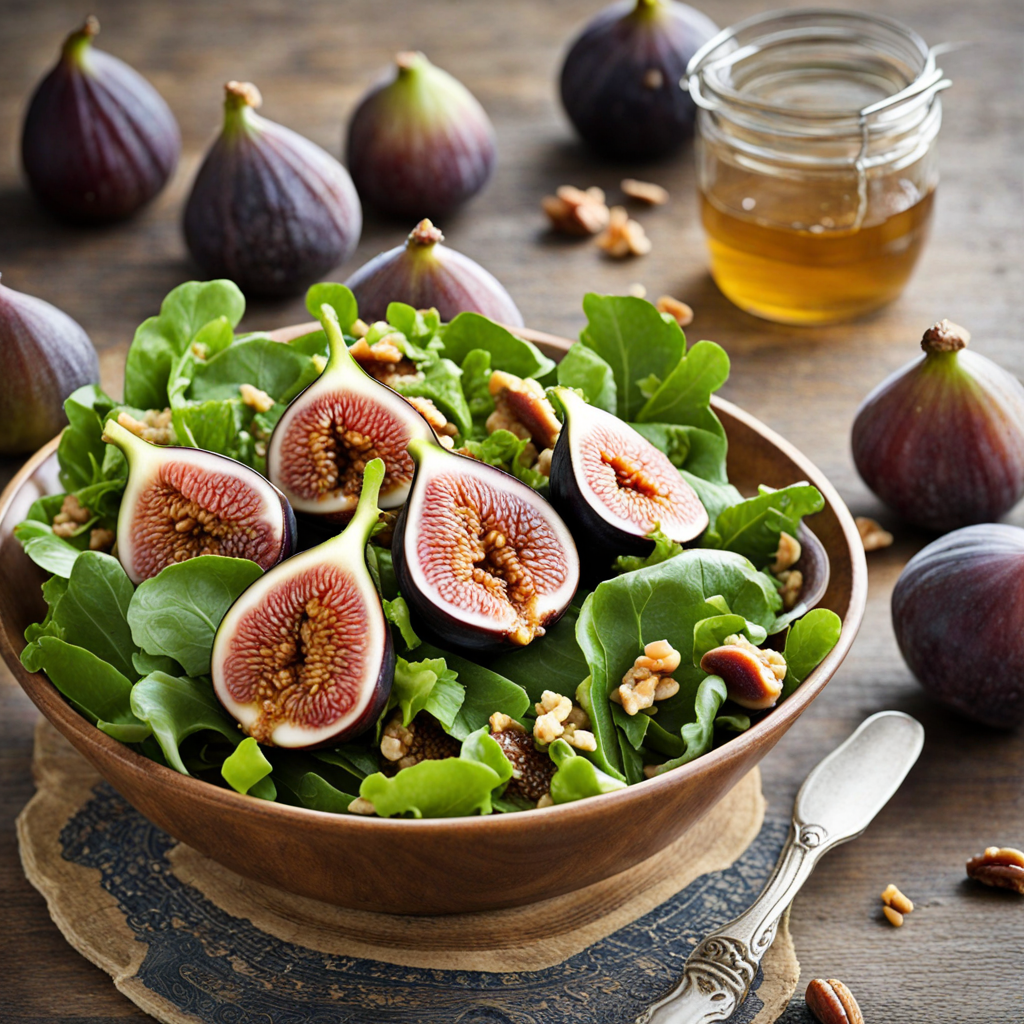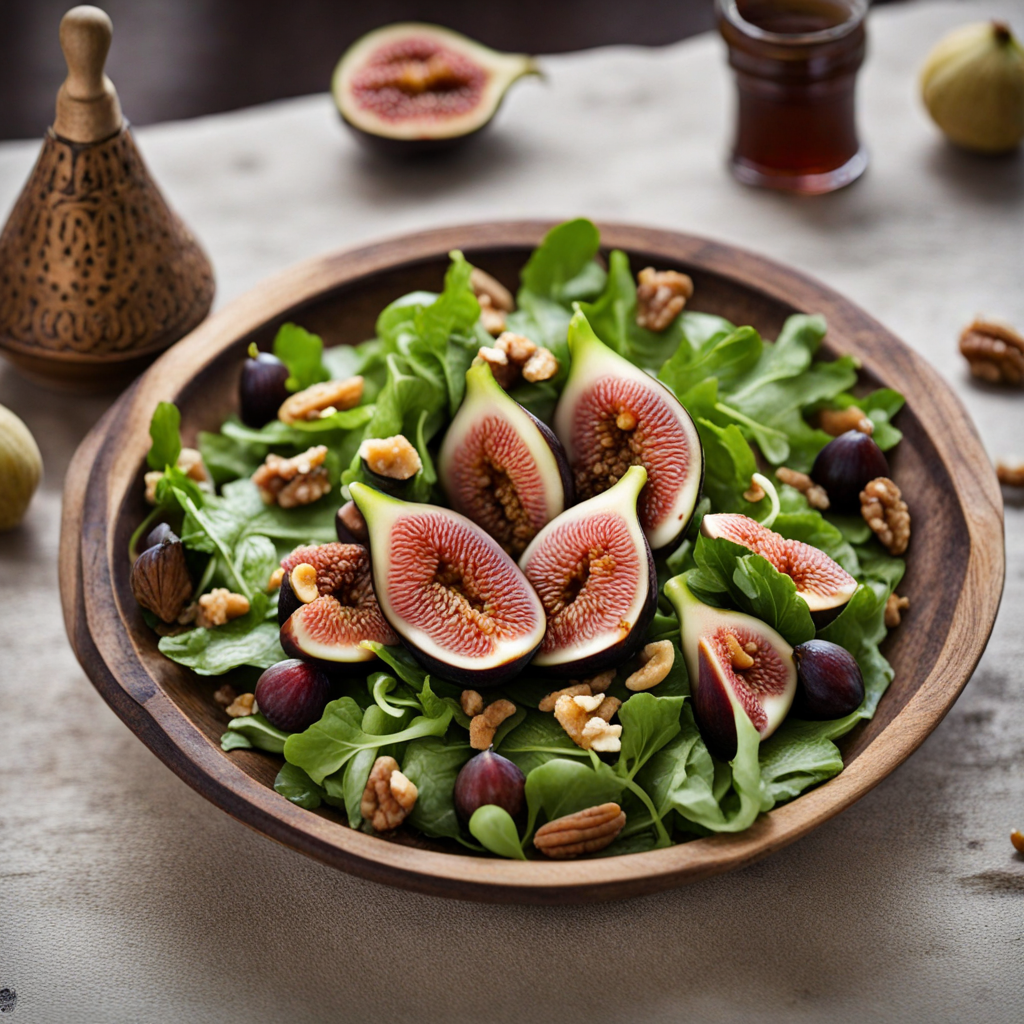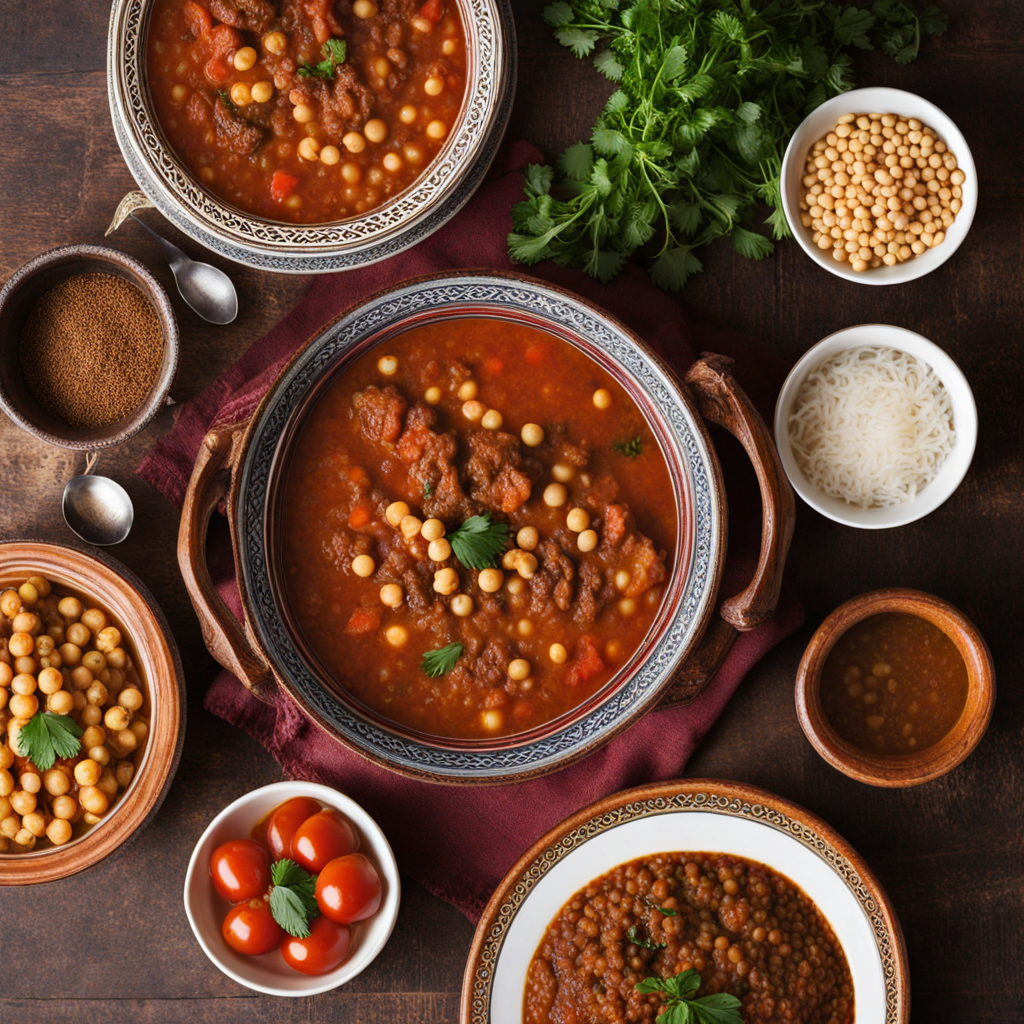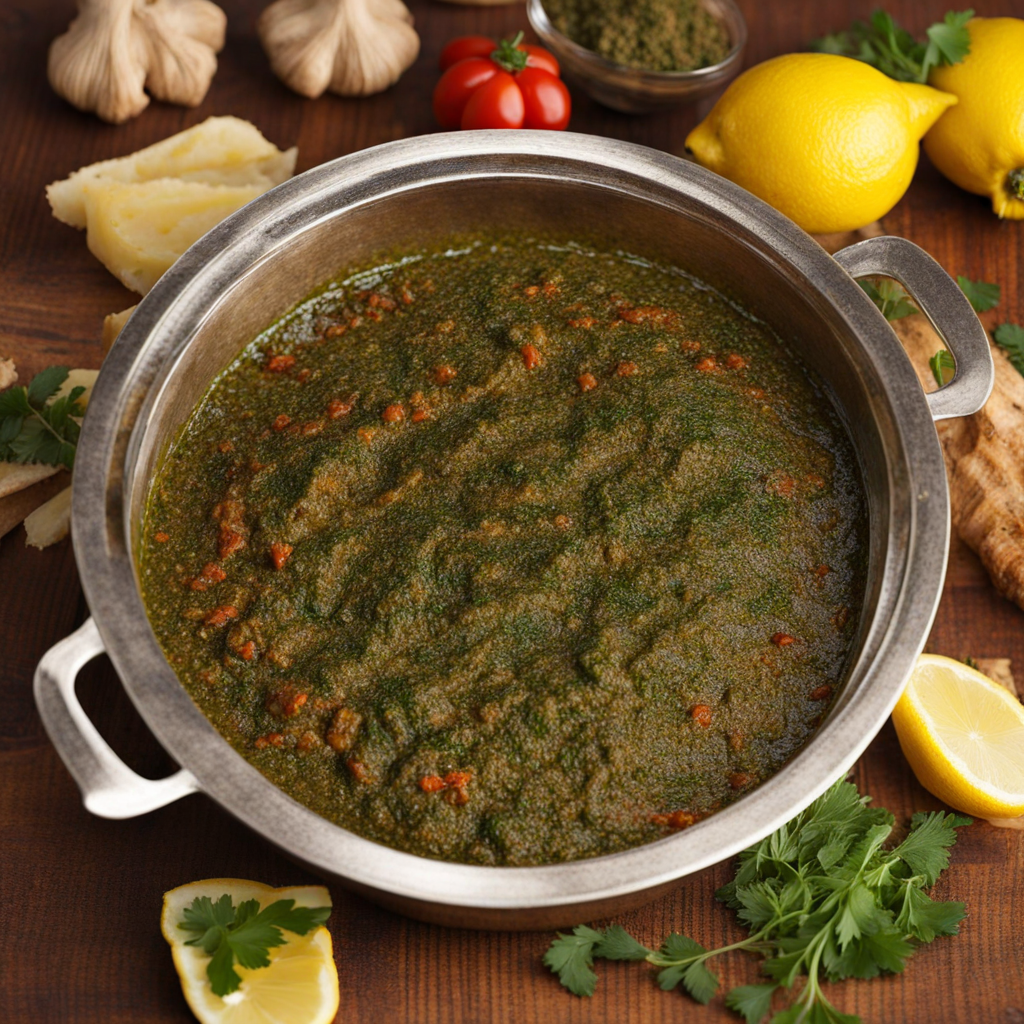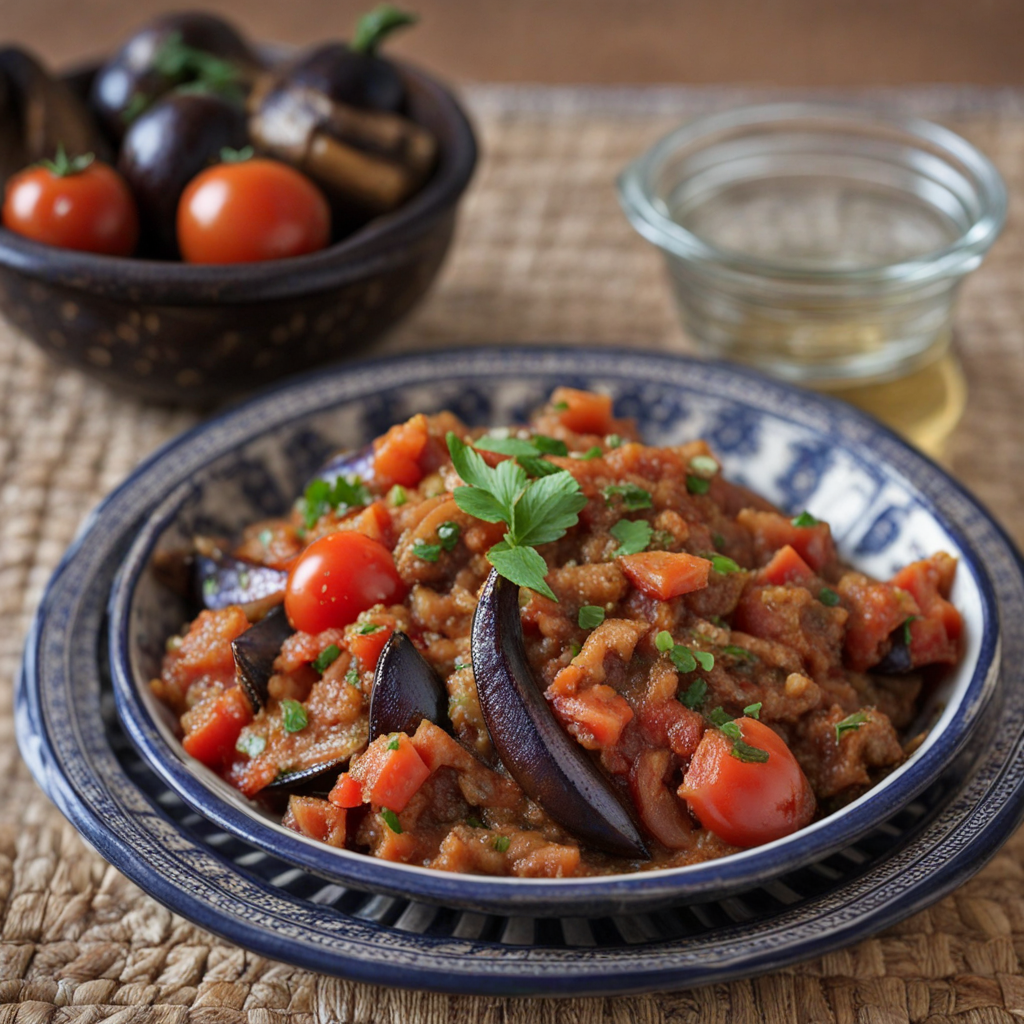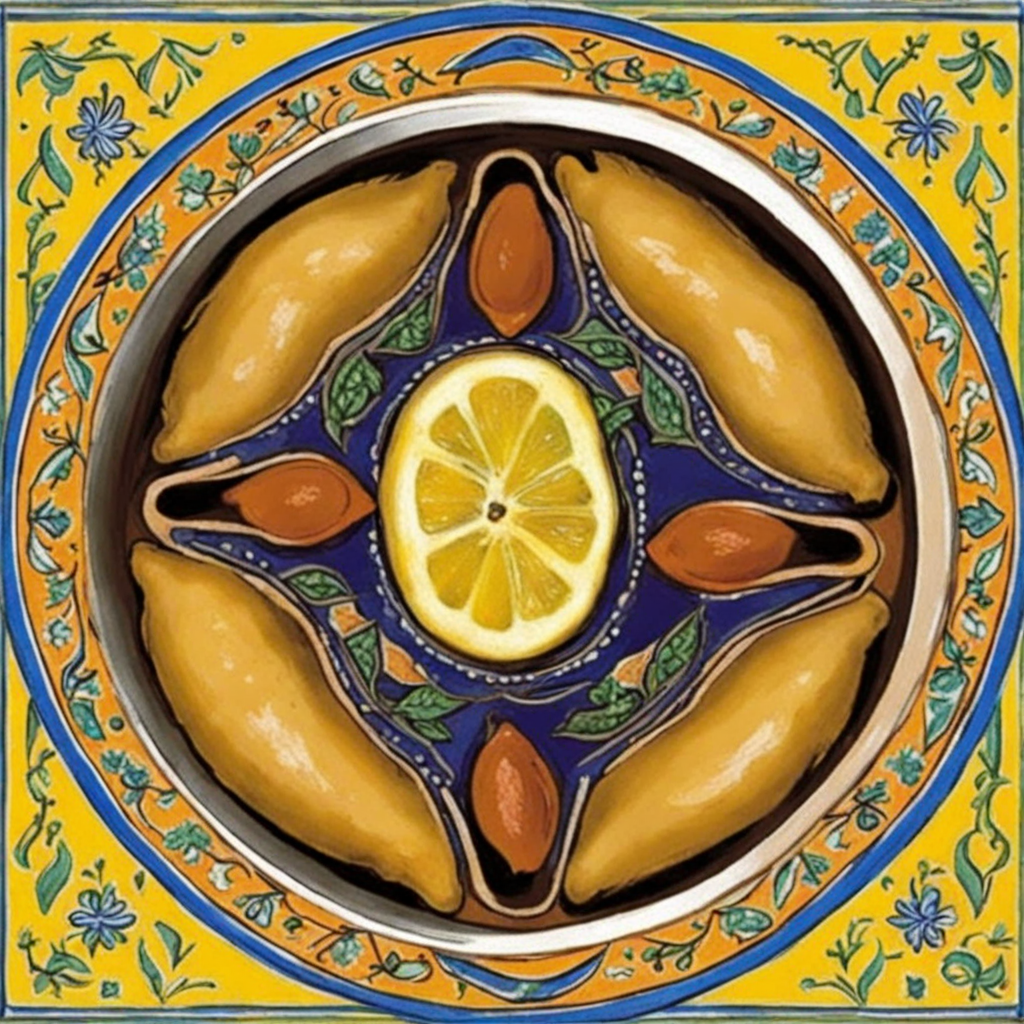Fig Salad
Fig Salad is a delightful Moroccan dish that beautifully embodies the vibrant flavors and textures of the region. At its core, this salad features fresh, ripe figs, known for their natural sweetness and unique chewiness. The figs are typically sliced and combined with a medley of ingredients like crisp greens, such as arugula or mixed salad leaves, which provide a refreshing base. The addition of creamy goat cheese or tangy feta adds a rich contrast, while toasted nuts, often almonds or walnuts, contribute a satisfying crunch, enhancing the overall experience of the dish. To elevate the flavor profile, Moroccan spices like cinnamon and cumin may be sprinkled over the salad, infusing it with warmth and depth. A drizzle of olive oil, often infused with herbs, complements the sweetness of the figs and binds the ingredients together, while a splash of balsamic vinegar or pomegranate molasses introduces a tangy brightness. The combination of sweet, savory, and tangy elements creates a harmonious balance that excites the palate and showcases the culinary artistry of Moroccan cuisine. Fig Salad is not just a dish; it is a celebration of seasonal produce and local traditions. Served as an appetizer or a light main course, it pairs beautifully with crusty bread or grilled meats, making it a versatile choice for any meal. Whether enjoyed at a bustling Moroccan market or prepared at home, this salad invites you to explore the rich tapestry of flavors that define Morocco’s culinary heritage, offering a unique and refreshing taste experience that is both satisfying and nourishing.
How It Became This Dish
## The Enigmatic History of سلطة التين (Fig Salad) in Moroccan Cuisine Origins: The Fruit of the Land The story of سلطة التين, or Fig Salad, is deeply intertwined with Morocco's rich agricultural heritage and the cultural tapestry of the region. Figs, the primary ingredient in this salad, have been cultivated in North Africa for thousands of years, with archaeological evidence suggesting their domestication around 5,000 B.C. in the area that is now Turkey, from where they spread to the Mediterranean and beyond. In Morocco, figs thrive in the warm, dry climate, particularly in regions like Fes, Marrakech, and the Souss Valley. These areas are known for their fertile soil and traditional farming practices, which have been passed down through generations. The fig tree, a symbol of abundance and fertility, holds a special place in Moroccan agriculture. Its fruits are not only enjoyed fresh but are also dried for preservation, making them a vital component of the Moroccan diet, especially during the winter months when fresh produce is scarce. Cultural Significance: More Than Just a Salad سلطة التين is not merely a dish; it represents a fusion of flavors and cultural influences that characterize Moroccan cuisine. The salad typically combines fresh figs with a variety of ingredients, including nuts, often almonds or walnuts, and sometimes cheese, honey, and spices like cinnamon. Each ingredient tells a story and reflects the diverse influences that have shaped Moroccan culinary traditions. Figs have historically been associated with prosperity and hospitality in Moroccan culture. Their presence on the table is often seen during significant celebrations, religious holidays, and family gatherings. The act of sharing food, particularly a dish as visually appealing and flavorful as سلطة التين, embodies the Moroccan values of community and generosity. In the context of Moroccan weddings, figs are often included in the elaborate spreads served to guests. They symbolize fertility and good fortune for the newlyweds. As such, سلطة التين serves as both a culinary delight and a cultural emblem of hope and prosperity, making it an integral part of Moroccan life. Development Over Time: Tradition Meets Innovation The evolution of سلطة التين reflects the dynamic nature of Moroccan cuisine, which has been influenced by various cultures over the centuries. The arrival of the Phoenicians, Romans, and later the Arab and Berber peoples brought new flavors, ingredients, and cooking techniques that enriched the culinary landscape of Morocco. During the medieval period, the Moroccan palate began to embrace a more diverse array of ingredients, influenced by trade routes that connected North Africa to Europe and the Middle East. The introduction of spices like cumin, coriander, and saffron transformed the way foods were prepared and presented. The use of nuts and dried fruits became more prevalent, leading to the development of dishes that celebrated the region's bounty. In the 20th century, as Morocco began to modernize, the traditional recipes for سلطة التين and other Moroccan dishes started to adapt to contemporary tastes. Chefs began experimenting with new combinations, incorporating ingredients like goat cheese and balsamic vinegar, while still honoring the essence of the original salad. This blending of tradition and innovation has allowed سلطة التين to maintain its relevance in modern Moroccan cuisine. Regional Variations: A Salad for Every Occasion While the basic components of سلطة التين remain consistent, regional variations reflect the local ingredients and culinary practices. In the coastal regions, for instance, the salad might be paired with fresh seafood or drizzled with citrus dressings, showcasing the abundance of the Mediterranean. In the mountainous areas, the salad may incorporate local cheeses or herbs, highlighting the unique terroir of the region. Moreover, the salad's preparation can vary based on the occasion. During Ramadan, when the breaking of the fast is a communal affair, سلطة التين is often served as a refreshing appetizer to complement the traditional Moroccan soup, harira. Its sweetness provides a delightful contrast to the savory flavors of the soup, making it a beloved dish during this holy month. The Modern Revival: Global Appreciation As Moroccan cuisine gains popularity worldwide, سلطة التين has found its way onto menus in restaurants across the globe. The emphasis on fresh, healthy ingredients appeals to modern diners seeking nutritious options. The salad’s vibrant colors, enticing flavors, and health benefits—rich in fiber, antioxidants, and vitamins—make it an attractive choice for food enthusiasts. In recent years, the concept of "farm-to-table" dining has also contributed to the revival of traditional dishes like سلطة التين. Chefs and home cooks alike are increasingly seeking locally sourced ingredients, echoing the age-old practices of Moroccan farmers. This return to simplicity and authenticity pays homage to the land and its produce, celebrating the seasonal availability of figs and other ingredients. Conclusion: A Timeless Tradition سلطة التين is more than just a dish; it is an embodiment of Morocco's agricultural richness, cultural diversity, and culinary heritage. From its ancient origins to its modern-day adaptations, this salad encapsulates the essence of Moroccan hospitality and the joy of sharing food with others. As it continues to evolve and inspire new generations of cooks and food lovers, سلطة التين stands as a testament to the timeless nature of culinary traditions. In every bite, one can taste the history, culture, and passion that define Moroccan cuisine, making it a cherished dish that will remain integral to Moroccan identity for years to come.
You may like
Discover local flavors from Morocco


